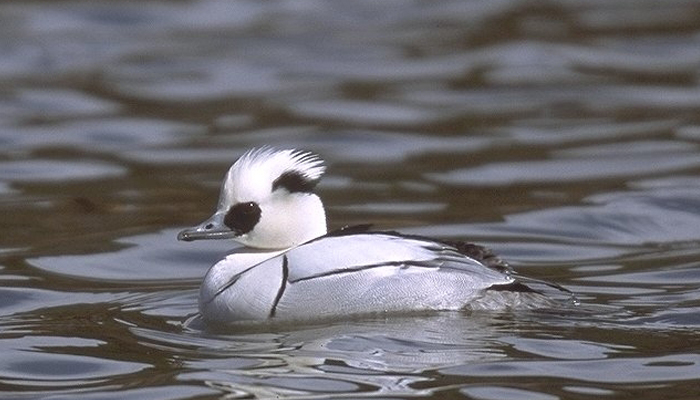
English: Smew
Russian: Луток
German: Zwergsager
French: Harle piette
Mongolian: Цахиур
бохио, Цахир нугас
Japanese: ミコアイサ (Miko-aisa)
Body length: 38-44 cm
Wing span: 56-69 cm
Habitat: Breeds
in Northern boreal forests by clear lakes or calm rivers. Rather scarce. Migratory.
Shy and restless, pairs or small parties on wintering grounds inclined to make
aerial excursions, spreading out rather than keeping together (though small and
medium-sized flocks can be seen at the most favoured localities), feeding close
to reedbeds in shallow waters. Nests in tree-hole (old nest of Black
Woodpecker) or box.
Identification:
Small, rather compact saw bill, more similar to the Bucephala species (and
indeed occasionally interbreeds with Goldeneye).
- Adult
♂ breeding: Distinctive, being largely dazzlingly white neat black pattering;
head white with black loral ‘mask’ from bill backwards around eye; black line
or patch at side of nape. In flight, appears surprisingly pied black and white.
A large oval white patch is visible on upper forewing.
- Adult
♀: Dull brown grey with cheeks and dark chestnut –brown forehead and crown;
lores blackish, becoming more brownish during breeding. Wing pattern similar to
that of ♂, but white more restricted.
- Adult
♂ eclipse: Like adult ♀ summer (with brownish lores), but retains more
extensive white wing patch, and blacker, not so greyish, on back.
- Juvenile:
Very similar to adult ♀, but belly a little less whitish, more mottled grey,
and loral area brown at least in 1st autumn, and sometimes longer.